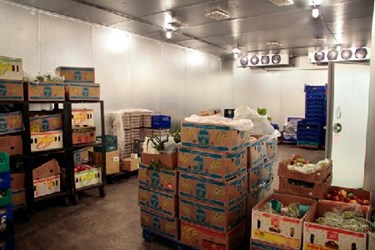Cold-Chain Planning Is Feeling The Heat Of QSR Demands
By Melissa Lind, contributing writer

As the global food market continues to expand its reach, demand for fresh products and higher-quality goods in both developed and undeveloped market is putting pressure on the cold-chain market. This development affects both raw ingredients and prepared foods, but growth in fresh foods is particularly aggressive.
A recent study issued by ATKearney, a Chicago-based consulting firm, shows that the fresh, prepared-food market tops $26 billion. This indicates that growth in the Quick Service Restaurant (QSR) market is largely responsible. Restaurants, such as Chipotle and Panera Bread, are driving consumers to demand healthier, fresh foods when seeking “fast food.”
Consumer desire has shifted the focus of many QSRs from seeing fresh, refrigerated items as an extra or a novelty, to viewing them as a menu necessity. The increased demand for refrigerated offerings has impacted the cold-chain, placing increased demands upon it.
Any supply-chain manager knows that keeping products moving takes effort, but the cold-chain supply line poses additional complexities in a challenging environment. Cold-chain managers must continue to give the customers what they want in a timely manner, but must incorporate measures to manage the complexities of refrigerated storage and transport.
Cold-chain managers are faced with a number of additional issues including:
- Refrigerated vehicle and storage cost
- Shortened timelines to get food from harvest to table
- Increased focus on food safety and quality
- Increased likelihood of spoilage
- Individual variances depending on food type
- Increased number of vendors
- Difficulty in managing supplier issues
Planning Is Critical
As cold-chain supply is more complex and costly, efficient planning is essential. Unlike traditional purchasing processes, cold-chain managers must be included in product development and marketing because product insight may be needed. Cold-chain managers can provide input in regard to availability, costs, and feasibility of individual ingredients — and final product placement.
In addition to considerations such as storage, the cold-chain process also involves close attention to scheduling, seasonal variations, and safety issues, such as temperature monitoring. In many cases, a failure of the supply line due to vendor difficulties or safety issues cannot be easily overcome with substitutions or a change in vendors. This makes proactive planning and real-time visibility essential.
Even for one product, cold-chain supply provision takes longer to establish. It not only costs more, but may be subject to seasonal changes along with other environmental and even economic concerns. Planning and coordination can make the difference between success and failure. Big implications have been placed on the safety, regulatory compliance, and profitability fronts and effective management of the cold-chain process can provide a significant business advantage over competitors who can’t meet consumer demands.
